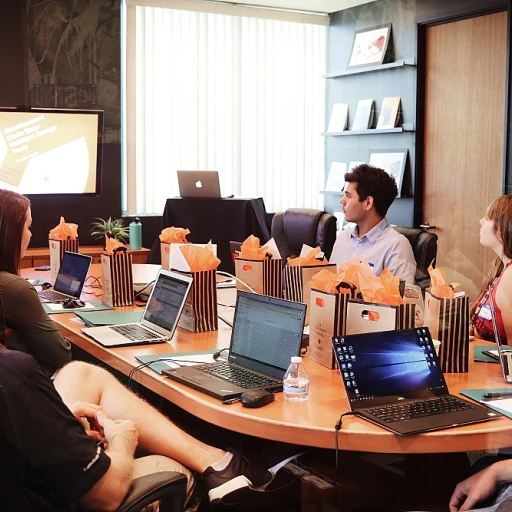
Understanding the Importance of Employee Recognition
The Role of Recognition in Elevating Employee Engagement
At the heart of fostering a positive work environment and enhancing employee engagement is the concept of effective recognition. Organizations that emphasize the achievements and contributions of their team members often witness a vibrant and motivated company culture. Proper employee recognition is not just about acknowledging someone's hard work; it has far-reaching impacts that can elevate the entire organization's dynamics.
Acknowledging employees for their efforts can create a ripple effect. When employees feel appreciated, they are more likely to be engaged, loyal, and invested in their roles. This engagement contributes to a sense of community, fostering collaboration and boosting morale among team members. Additionally, a well-recognized workforce can significantly contribute to employer branding, making the company attractive to top talent.
For instance, incorporating employee spotlights can provide a platform for employees to share their success stories and personal achievements. By spotlighting spotlight examples through various channels like social media, organizations can further extend their reach and recognition presence, both internally and externally. These spotlight initiatives help highlight the diverse talents within the company, promoting a culture of acknowledgment and appreciation.
When implementing recognition strategies, it's vital to consider the best practices, such as developing a comprehensive recognition program that aligns with organizational goals. Incorporating spotlight questions and engaging formats can keep the recognition process dynamic and inclusive. Organizations should continuously explore innovative communication channels to ensure the employee spotlight program remains fresh and relevant.
Understanding and implementing recognition is crucial. Many companies are now revisiting this essential aspect as evidenced in discussions surrounding the key to employee retention, emphasizing how vital addressing recognition is in the broader scope of employee retention strategies.
Creating an Effective Employee Spotlight Program
Establishing a Spotlight Program Framework
In the journey to nurture a positive work environment, structuring an employee spotlight program emerges as a cornerstone of employee recognition efforts. A well-designed program can help companies highlight the ‘why’ behind why teams and individuals are celebrated, fostering a sense of accomplishment and appreciation within the organization.
Defining Goals and Objectives
Firstly, clarify the purpose of your spotlight program. Are you aiming to recognize individuals for exceptional performance, key achievements, or significant contributions? Defining concrete goals will shape the narrative of your spotlights. These spotlights should align with your company culture and core values, reinforcing what your organization stands for and what it appreciates most in its employees. This alignment helps further engage members of your team and strengthens their connection with the company’s mission.
Developing Spotlight Questions
Spotlight questions are pivotal in drawing out meaningful stories from employees. Ensure these questions are open-ended to allow room for employees to share personal anecdotes and experiences. This can include inquiries like: ‘Can you describe a team project you were particularly proud of?’ or ‘What motivates you to achieve your personal best at work?’. Such questions not only showcase individual achievements but deepen a sense of community within the organization by highlighting shared values and experiences.
Setting Up Communication Channels
Effective communication channels are vital in amplifying employee spotlights. Whether it be through internal newsletters, social media channels, or company meetings, ensure these stories reach various audiences, both within and outside the organization. Engaging platforms increase visibility and emphasize the organization’s commitment to employee appreciation, promoting a robust company culture.
Sharing Best Practices
Learning from past challenges or spotlight examples from other organizations can enhance the effectiveness of your program. Sharing best practices helps refine your approach and can elevate the overall impact. Feedback from participants and observers of the program can guide continuous improvements, ensuring your spotlight program remains relevant and engaging.
The Impact of Employee Spotlights on Team Dynamics
Fostering Team Dynamics Through Effective Recognition
Employee spotlights can play a crucial role in enhancing team dynamics by acknowledging individual achievements and contributions. By sharing employee successes and celebrating hard work, organizations can create a sense of community and positive work culture that supports both personal and professional growth. When employees feel appreciated and their efforts are recognized, they are more likely to engage with their roles and collaborate with others. Implementing a well-structured spotlight program can help bridge the gap between personal accomplishments and team success. Here are some ways employee spotlights can impact team dynamics:- Building Trust and Collaboration: Recognizing employees' contributions fosters an environment of trust and promotes open communication channels within the team. This facilitates collaboration and encourages team members to be more forthcoming in sharing ideas.
- Nurturing a Supportive Company Culture: With a spotlight on achievements, an organization can cultivate a culture of support where team members celebrate each other's successes. This nurturing environment bolsters employee engagement and morale.
- Enhancing Employer Branding: By publicly sharing employee achievements, whether through internal newsletters or social media, companies can bolster their employer brand, attracting top talent who align with the company's values and culture.
Leveraging Technology for Employee Spotlights
Embracing Technology for Recognizing Achievements
In today's digitally driven workplace, leveraging technology can significantly enhance how organizations spotlight employee contributions. With effective use of existing tools and innovative platforms, companies can not only streamline their recognition processes but also embed a robust culture of acknowledgment and engagement. First, adopting social media channels can be a powerful way to publicly acknowledge achievements. When employees feel valued and their accomplishments are showcased on platforms such as LinkedIn or internal company networks, it fosters a sense of pride and encourages others to share their successes as well. However, remember to respect privacy settings and obtain permissions before sharing personal successes on broader communication channels. Moreover, leveraging technology allows for more interactive and engaging recognition experiences. Digital spotlights, for example, can include multimedia elements such as video shout-outs from team members or managers, enriching the impact of the recognition. Virtual whiteboards or dedicated chat threads where employees exchange positive work comments also promote a supportive environment. Aided by analytics, technology can help organizations track which categories of employee achievements resonate most with their workforce. By systematically collecting data on what drives employee engagement through spotlight programs, companies can refine their approaches to more accurately meet their team members' needs. Finally, integrating these technological elements aligns with best practices for robust employee recognition. Effective use of innovative tools not only supports the celebration of hard work but also enhances company culture, improving employer branding and nurturing a collaborative team dynamic across departments. Investing in technology is an investment in people, their achievements, and ultimately the company's successes. By nurturing a culture where employee contributions are regularly shared and celebrated, organizations can foster a strong sense of community and attract top talent.Measuring the Success of Employee Recognition Programs
Evaluating the Effectiveness of Employee Recognition Efforts
Measuring the success of employee recognition programs is essential for ensuring they meet their objectives and continually improve. By understanding how employee spotlights boost morale and influence company culture, organizations can tailor their strategies for maximum impact. To effectively measure success, consider the following methods:- Employee Surveys and Feedback: Collecting feedback from employees through surveys can provide valuable insights into how recognition programs impact engagement and morale. Ask specific questions about how these programs make employees feel, and whether they feel their contributions are adequately recognized.
- Engagement Metrics: Monitoring changes in employee engagement levels before and after implementing a recognition program can help determine its effectiveness. Increased engagement often leads to improved productivity and retention.
- Social Media and Communication Channels: Track the reach and interaction on social media platforms and internal communication channels when sharing employee spotlight stories. A positive response and high participation rates can indicate strong interest and support for the spotlight program.
- Performance and Productivity: Analyze data related to employee performance and productivity. Spotlights should ideally culminate in a sense of personal pride and community, translating into enhanced work outcomes and creativity.
- Retention Rates: Assess the impact on employee retention by comparing turnover rates before and after the implementation of the recognition program. Lower turnover can denote that the spotlight initiatives contribute to a positive work environment.
Overcoming Challenges in Employee Recognition
Tackling Hurdles in Employee Recognition Programs
Employee recognition is crucial in maintaining a robust company culture and promoting employee engagement. However, organizations often face hurdles in implementing successful employee spotlight programs that effectively highlight achievements and contributions. Addressing these challenges head-on can help sustain positive work environments and enhance teamwork among team members.
Identifying Common Challenges
- Lack of Consistency: Inconsistent recognition can lead to employee dissatisfaction. Regular employee spotlights are necessary to ensure employees feel valued.
- Inadequate Communication Channels: It's crucial to ask the right spotlight questions and distribute them through available channels, whether through internal newsletters or social media.
- Resistance to Change: Some employees or team leaders may hesitate to adopt new recognition practices, which can undermine the program's effectiveness.
Strategies to Overcome Challenges
- Implement Best Practices: Drawing from successful spotlight examples can guide organizations in executing a program that resonates with the team.
- Engage Employees: Encourage employees to share their achievements personnel and recognize each other’s work to nurture a sense of community.
- Leverage Technology: Using modern platforms can help manage and share employee spotlights effectively across various social media.
- Cultivate an Open Culture: Foster an environment where feedback is welcome. This open dialogue can clarify expectations and encourage employees to participate.
By addressing these common challenges, organizations can develop recognition programs that boost morale, enhance employer branding, and retain top talent. Consistent recognition of hard work and contributions builds a strong foundation for ongoing employee engagement, creating a thriving company culture.












